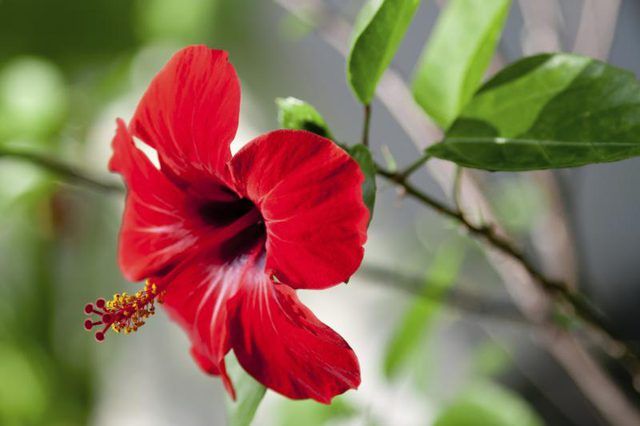Bulbs
Flower Basics
Flower Beds & Specialty Gardens
Flower Garden
Garden Furniture
Garden Gnomes
Garden Seeds
Garden Sheds
Garden Statues
Garden Tools & Supplies
Gardening Basics
Green & Organic
Groundcovers & Vines
Growing Annuals
Growing Basil
Growing Beans
Growing Berries
Growing Blueberries
Growing Cactus
Growing Corn
Growing Cotton
Growing Edibles
Growing Flowers
Growing Garlic
Growing Grapes
Growing Grass
Growing Herbs
Growing Jasmine
Growing Mint
Growing Mushrooms
Orchids
Growing Peanuts
Growing Perennials
Growing Plants
Growing Rosemary
Growing Roses
Growing Strawberries
Growing Sunflowers
Growing Thyme
Growing Tomatoes
Growing Tulips
Growing Vegetables
Herb Basics
Herb Garden
Indoor Growing
Landscaping Basics
Landscaping Patios
Landscaping Plants
Landscaping Shrubs
Landscaping Trees
Landscaping Walks & Pathways
Lawn Basics
Lawn Maintenance
Lawn Mowers
Lawn Ornaments
Lawn Planting
Lawn Tools
Outdoor Growing
Overall Landscape Planning
Pests, Weeds & Problems
Plant Basics
Rock Garden
Rose Garden
Shrubs
Soil
Specialty Gardens
Trees
Vegetable Garden
Yard Maintenance
What Flowers Do You Plant in the Spring?
What Flowers Do You Plant in the Spring?. If you enjoy growing flowering plants or are thinking about starting a flower garden, you can choose from a nearly endless list of plants to set into the garden in springtime. For perennials and some other plants, planting in early spring gets them off to a good start, but for tender annuals, it's best to...
If you enjoy growing flowering plants or are thinking about starting a flower garden, you can choose from a nearly endless list of plants to set into the garden in springtime. For perennials and some other plants, planting in early spring gets them off to a good start, but for tender annuals, it's best to wait until spring is well underway.
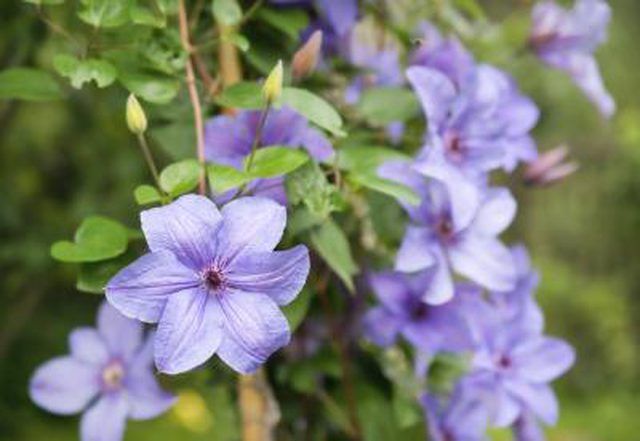
Many different herbaceous perennials, which die to the ground in winter, can be set out in early spring, giving them time to establish a good root system before warm weather arrives. Of those that thrive in full sun, daylilies (Hemerocallis spp.) are among the toughest and easiest to grow, producing large flowers with recurving petals in many colors. Examples include "Becky Lynn" (Hemerocallis "Becky Lynn") and "Catalyst" (Hemerocallis "Catalyst), with lavender and yellow flowers, respectively. Both grow in U.S. Department of Agriculture plant hardiness zones 3 through 10. If you'd like to brighten a shady spot with colorful flowers, choose astilbe plants (Astilbe chinensis), which love shade and have plume-like flowers above attractive foliage. Many astilbe cultivars exist, such as "Visons" (Astilbe chinensis "Visions"), which has pink flowers and grows in USDA zones 4 through 8.
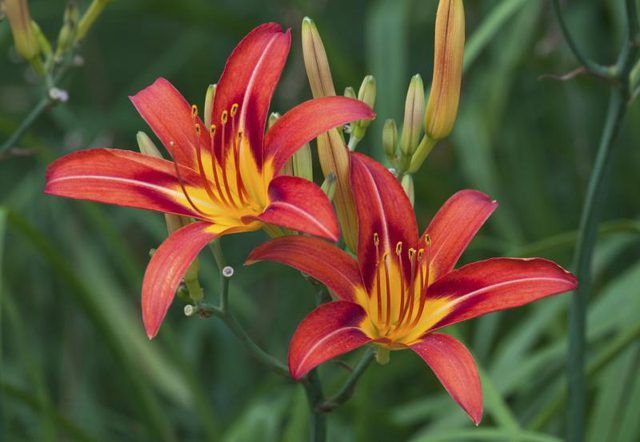
Unlike perennials that bloom for only a part of each season, most annuals flower non-stop and can fill a bed with color for an entire summer. But annuals are frost-sensitive, so if you area has sub-freezing temperatures in early spring, wait to set out annuals until all danger of frost has passed. Among the many choices, petunias (Petunia spp.) love a sunny spot, but they also do well in partial shade. They're available as dwarf varieties, trailing groundcovers, or erect cultivars, with single or double flowers in many shapes and colors. For a shady spot, plant impatiens (Impatiens walleriana), an easy-to-grow plant that produces masses of flowers for the entire summer, in pink, rose, orange, white or bicolors. Both petunias and impatiens are grown as annuals, although they may survive winter in USDA zones 10 through 11.
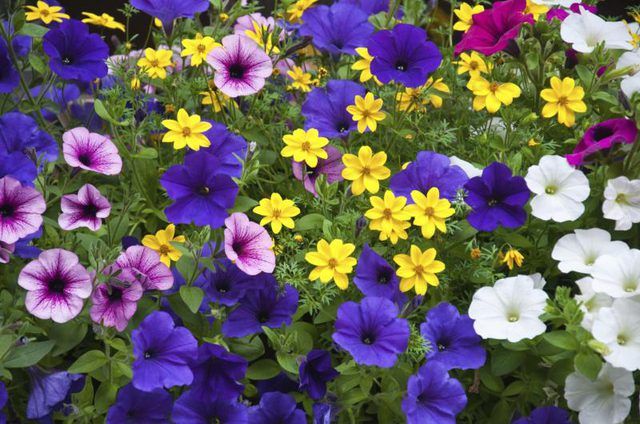
Spring is a good time to set out certain types of bulbs that benefit from cool, moist spring weather to develop a strong root system. Lilies (Lilium spp.) are especially tough and dependable plants that grow from a bulb made up of fleshy, concentrically arranged scales. They come in many varieties, organized into groups called divisions. The variety "Casa Blanca" (Lilium "Casa Blanca") is a good example that's about 4 feet high, with large, 8-inch-wide, fragrant white flowers in summer. It grows in USDA zones 5 through 8. Plant it in very early spring. The gladiolus (Gladiolus spp.) is another good choice that grows from a bulb, producing tall, blooming spikes in many different colors. They do well in full sun or partial shade and grow year-round in USDA zones 8 through 10, but also work well as annuals in colder areas.
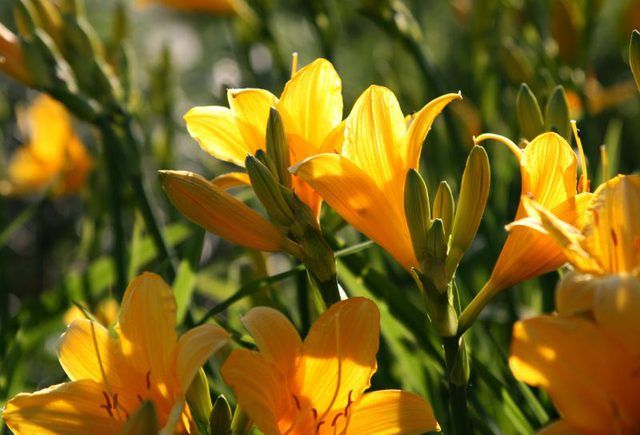
If you're looking for extra-large or impressive flowers, plant the hardy hibiscus (Hibiscus spp.) in early spring. It's a tough perennial with flowers often called "dinner plates" because of their size. The variety "Kopper King" (Hibiscus "Kopper King") is a good example that grows in USDA zones 4 through 9 and brings a summer-to-fall display of 10-inch wide, pinkish-white flowers atop burgundy foliage. If you have a mailbox post, fence or trellis, add a vining plant in spring, choosing one that blooms to add color and interest. For example, the clematis variety "Nelly Moser" (Clematis "Nelly Moser") grows in USDA zones 4 through 8 and climbs readily, with large, mauve-pink flowers covering the vine in May through June, or plant fragrant sweet peas (Lathyrus odoratus) once frost danger has passed. This avid climber has flowers in many colors and grows as an annual.
